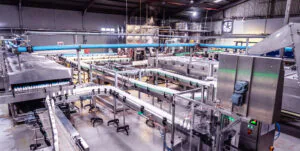In their quest for improvement, businesses often find themselves grappling with a dichotomy. While some of their ideas and concepts yield remarkable results, more often than not, they lead to debacles, leaving stakeholders bewildered about what went wrong. It’s akin to trying to sail on two ships simultaneously – a recipe for disaster. Similarly, when businesses juggle multiple initiatives without full engagement from internal stakeholders, who are often confused and uninvolved, these ideas tend to fizzle out.
Enter Kaizen, a Japanese philosophy centered around continuous improvement or “change for the better.” With its roots entrenched in the supply chain, manufacturing, and production industries, Kaizen emphasizes incremental yet continuous changes aimed at enhancing products, services, or processes while eliminating waste. At its core, Kaizen hinges on the active involvement of every individual within the organization, regardless of their designation or hierarchical level, to drive improvements in processes and systems. Unlike a quick fix or a one-time result, Kaizen embodies a process-oriented approach, wherein the outcome is the culmination of numerous interconnected small processes.
Change for the better, Just Kaizen Things
Kaizen, as mentioned earlier, is a process and not the result, as it emphasizes on a process-oriented approach in order to improve the results. This means that the outcome is a consequence of numerous small processes interlinked to each other. This philosophy heavily relies on the PDCA concept – Plan, Do, Check and Act – that is a repetition of four steps to control and improve the supply chain and other business processes. In the supply chain and logistics function, kaizen holds more relevance as the processes involved can be improvised, revamped and redesigned so as to enhance its efficiency and effectiveness thereby creating a competitive advantage. According to Toyota’s Taichi Ohno, there are several wastes involved in manufacturing the perfect supply chain, namely,
- Overproduction
- Waiting time
- Inventory risks
- Transportation issues
- Product or process defects
Therefore, it requires for every employee from top management to the grassroots to work on eliminating waste on a daily basis.
Kaizen Your Way Through Your Supply Chain
Central to the Kaizen philosophy is the PDCA (Plan, Do, Check, Act) cycle – a repetitive four-step method aimed at controlling and enhancing supply chain and business processes. Within the realm of supply chain management, Kaizen holds particular significance as it enables the refinement, revamping, and redesigning of processes to bolster efficiency and effectiveness, thereby fostering a competitive edge. Taichi Ohno, the architect of Toyota’s renowned production system, identified several wastes in manufacturing that Kaizen aims to address.
The philosophy of continuous improvement extends beyond supply chain management, permeating various facets of an organization. By leveraging all available resources, fostering innovation, and employing strategic methodologies, Kaizen ensures a meticulous approach to each step, gradually enhancing overall efficiency.
But how does this philosophy translate to tangible benefits within the supply chain? The answer lies in recognizing the supply chain as a complex network of interconnected processes. From managing suppliers and refining production processes to implementing quality control measures and ensuring timely product delivery, every facet of the supply chain presents opportunities for improvement. Through Kaizen, these activities can be streamlined and optimized to minimize waste and enhance efficiency, thereby facilitating a smoother flow within the supply chain.
At SpendEdge, we specialize in providing expert services in supply market intelligence and supply chain management. Our comprehensive solutions, ranging from supplier management and spend analysis to tail spend management and pricing strategy development, align with the principles of Kaizen. By continually striving for improvement and embracing a culture of Kaizen, businesses can unlock their full potential and maintain a competitive edge in today’s dynamic market landscape.
To know more about supply chain management




